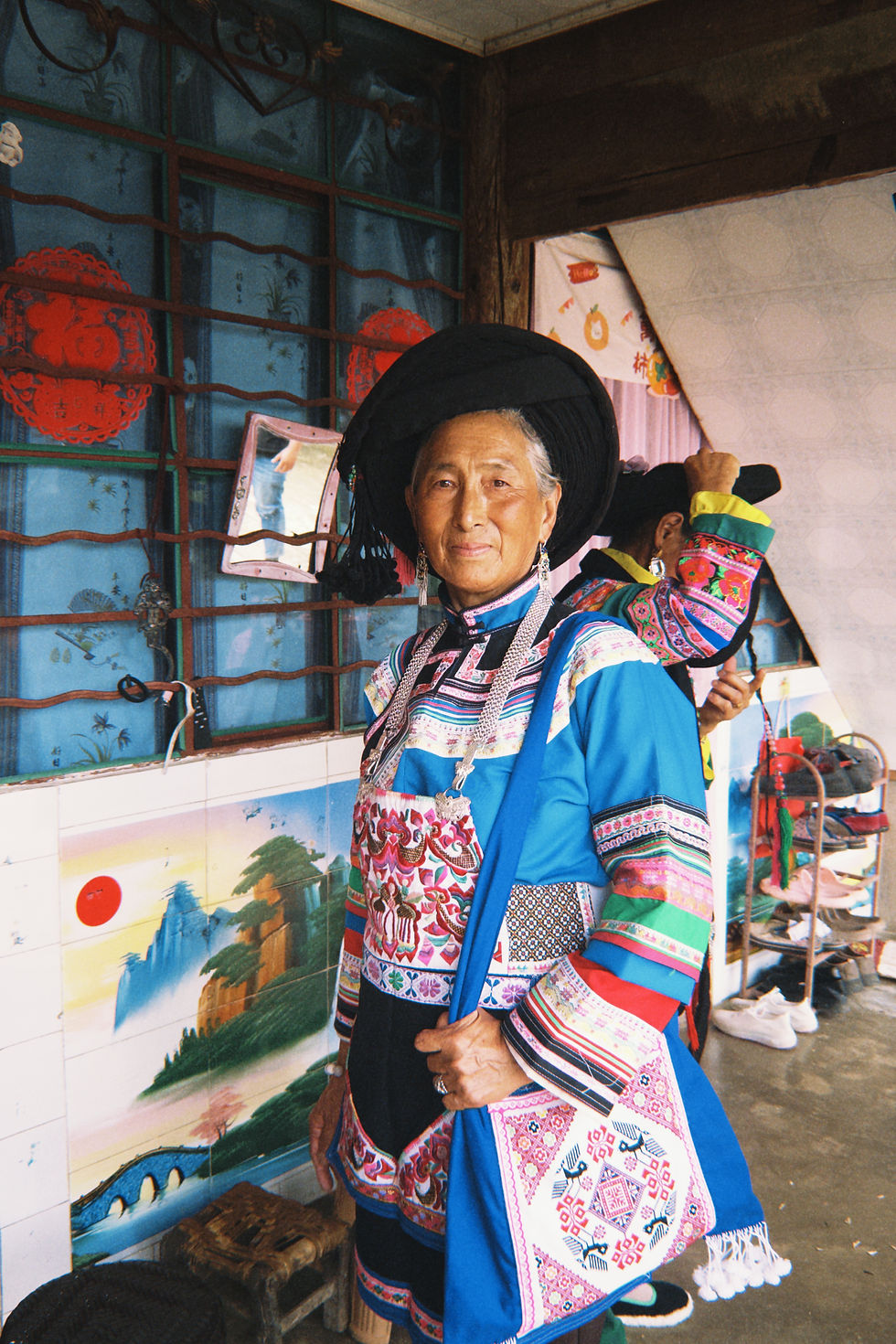The Inheritor of Embroidery
- Teenie Zhang
- Aug 24
- 2 min read
The Bai people, one of the 55 minority ethnic groups in China, inhabit the village. As we stepped inside the town, the villagers welcomed us warmly, their smiles lighting up with joy, enlightening our hearts, and easing the weariness from our long journey. Some elderly ladies invited us to visit their homes. We were shocked to see the diversity of Bai embroidery works as we entered one of the houses. Upon asking the lady of the house about the embroidery, her enthusiasm immediately rose. She therefore patiently introduced her embroidery works to us and shared her personal stories of life in the village.
Her name is Quan Lan Li, and she is currently 58 years old. Her main job is a farmer, growing crops and waiting patiently for fall, when the golden fields signal harvest and her hard work finally bears fruit. In the meantime, she would knit. Her way of knitting is named “Bai-style cross-stitch embroidery.” Unfortunately, she is just one of the few people who is proficient in “Bai-style cross-stitch embroidery,” as this type of embroidery has found it hard to pass down to later generations.

She came across embroidery when she was fourteen. “I learned embroidery with my friends when we were fourteen. During that time, we mainly taught ourselves, although the elderly ladies from our village occasionally offered some help. We started embroidering early in the morning and ended late at night. There is only a week between knowing absolutely nothing about embroidery and becoming proficient,” she recalled.
She has embroidered a wide range of items, including sachet ornaments, cloth pouches, fully embroidered veils, half-embroidered veils, and pillows. Her inspirations are typically drawn from her daily life; the patterns of the embroidery are generally inspired by her personal experiences and the scenes she observes in everyday life. She claimed that her best embroidery was done when she was young.
Her face saddened upon mentioning that. She sighed, her face no longer carrying the same warmth as before. “Now, my eyesight has become blurry. That makes embroidering harder than before.”
When asked whether she would sell her embroideries, she claimed that sometimes she did sell them to the villagers. However, it is not meant to commercialize her embroideries—she is unwilling to sell them in the markets. Instead, the villagers would knock on her door and buy the products. She mentioned that when she was younger, there were also people who asked for personalized embroideries, which she was also willing to make, although that would cost the customers quite a bit of money.

Now, she sometimes sells her embroideries to supply the money for her grandchildren's school fees. She has three grandchildren living in Shanghai with their parents. Her daughter, who sometimes would also embroider with her mother while she was back in Yunnan, secured a basic job in Shanghai for a better material life.
Though her eyesight dims and her hands tire, Quan Lan Li’s stitches still hold the stories of a life lived in quiet devotion. Each thread preserves the rhythm of the village and the memory of her youth, a fragile yet enduring link between past and present. Through her embroideries, the spirit of the Bai people quietly endures.



Comments